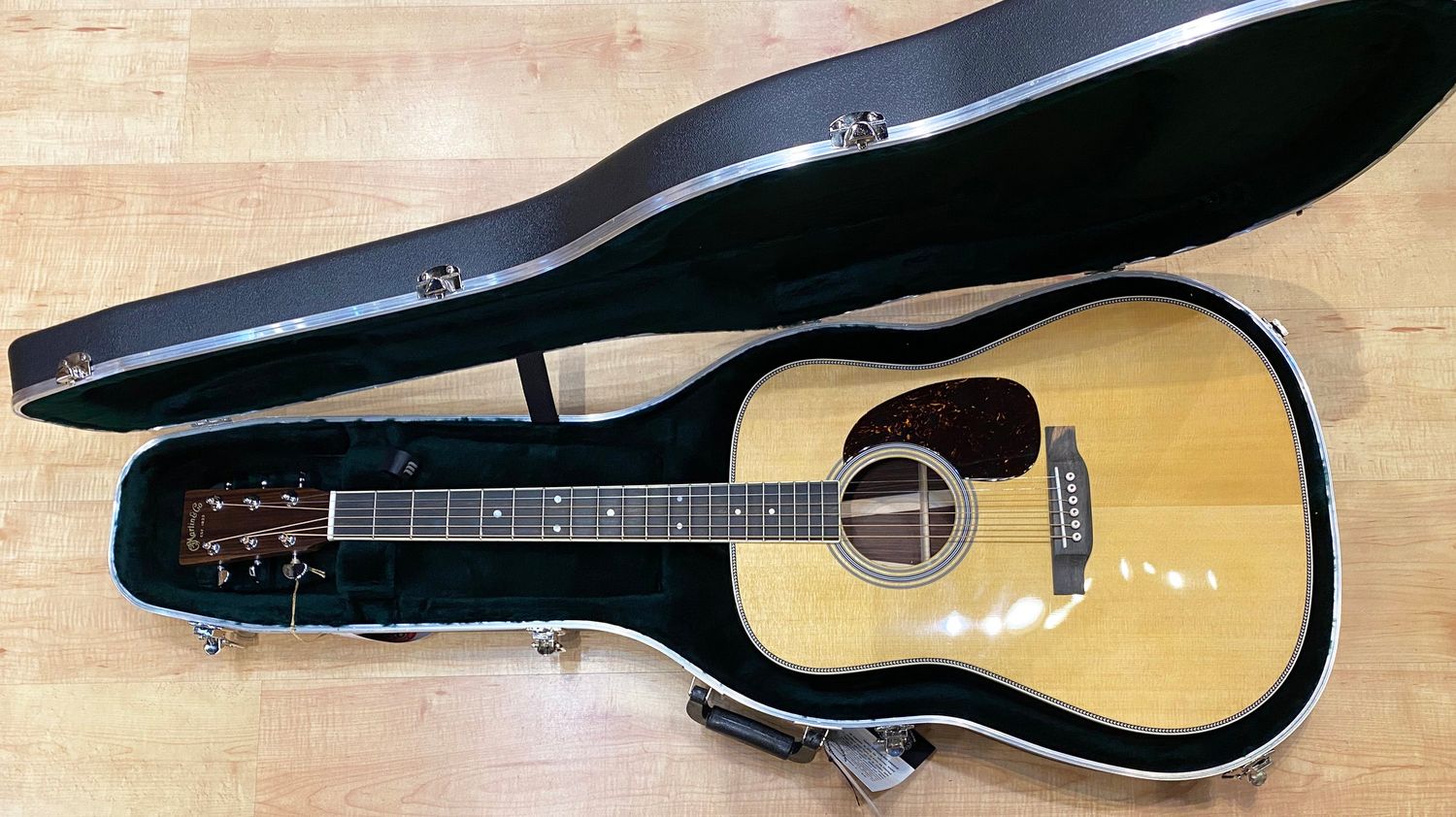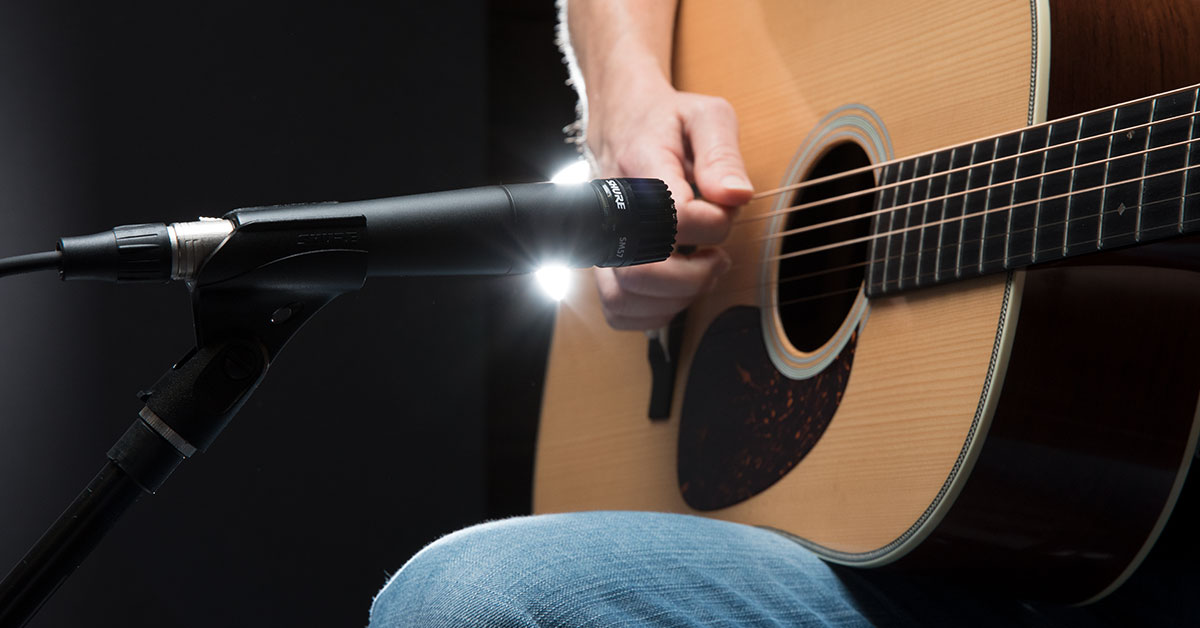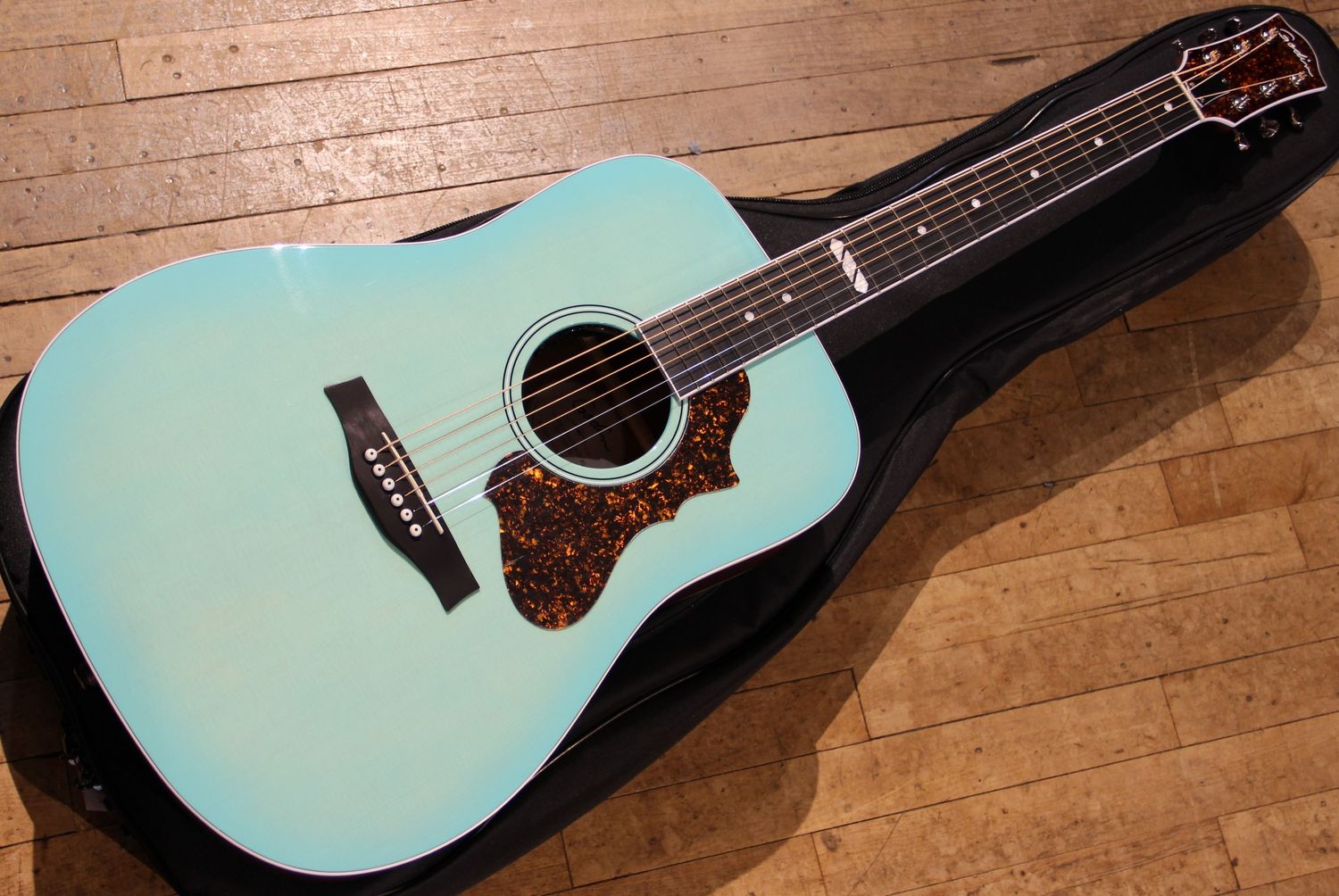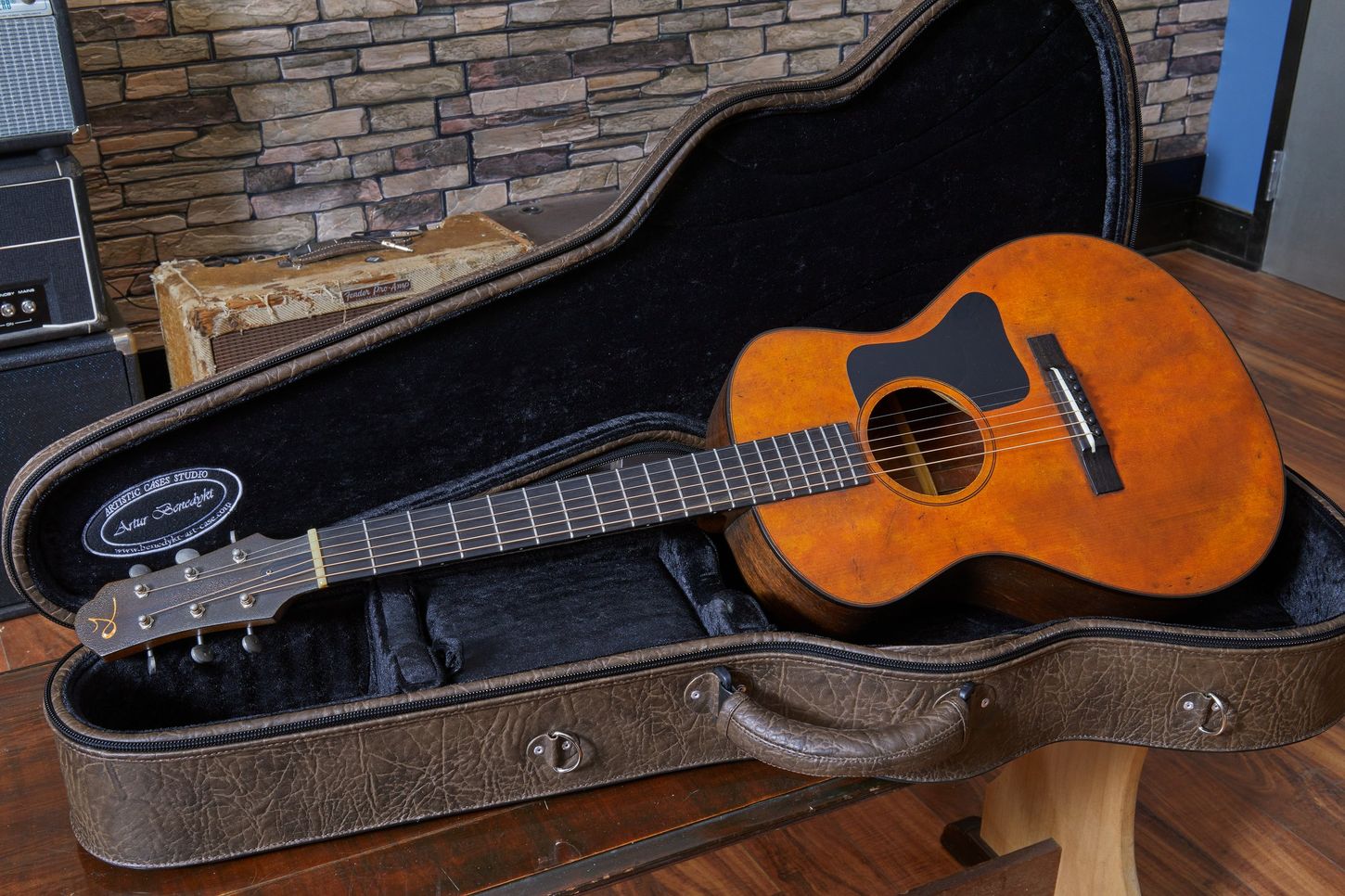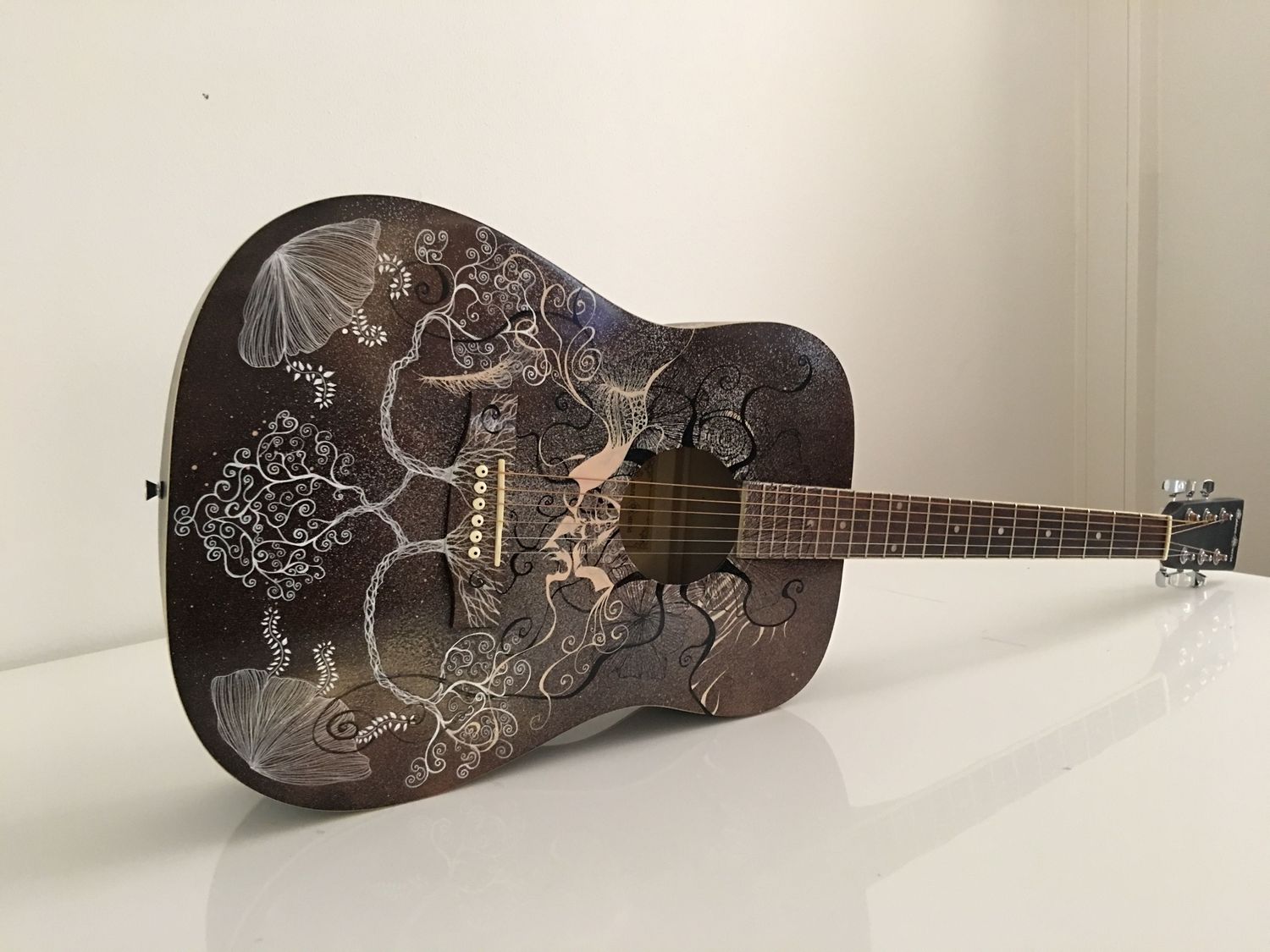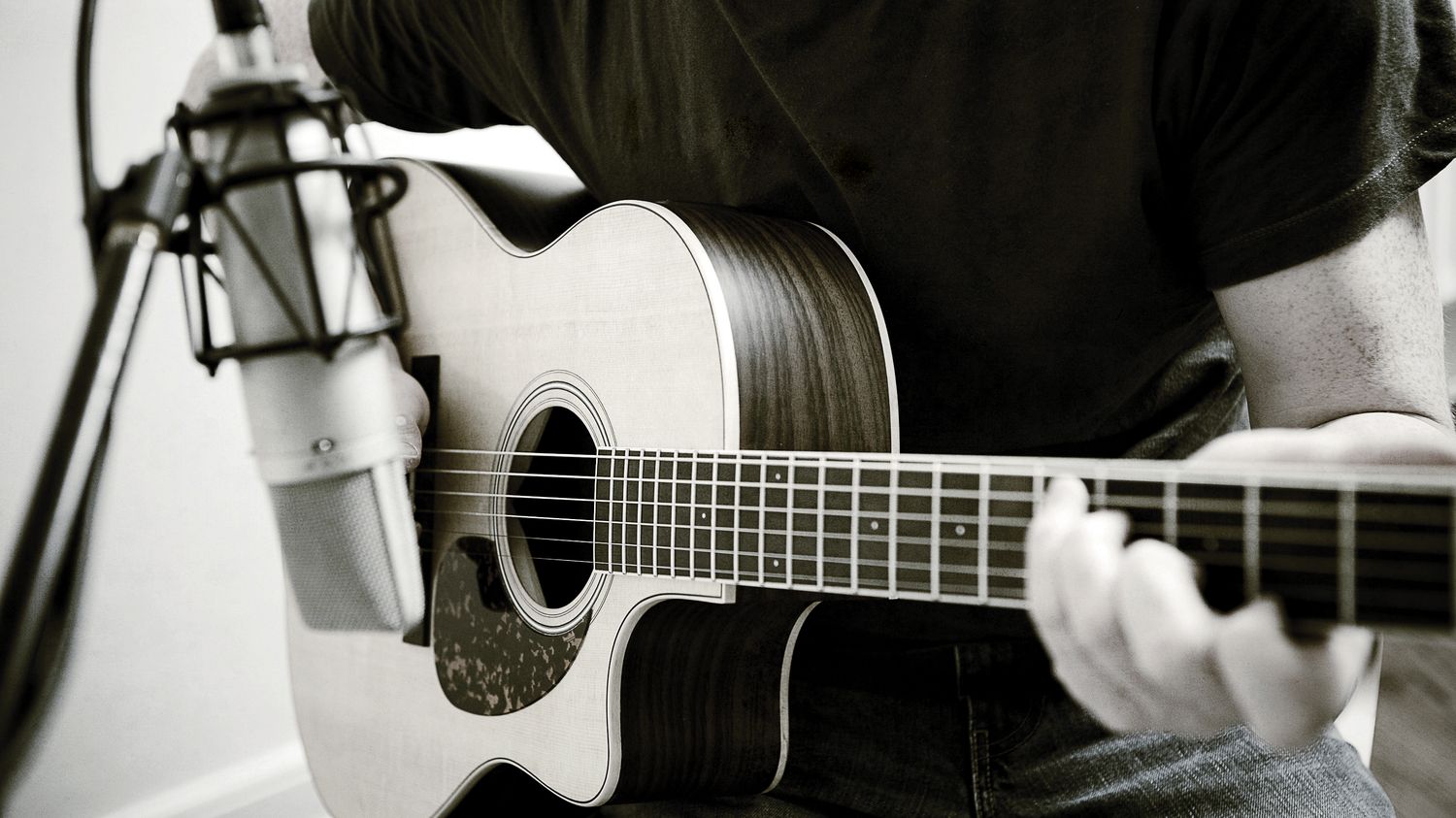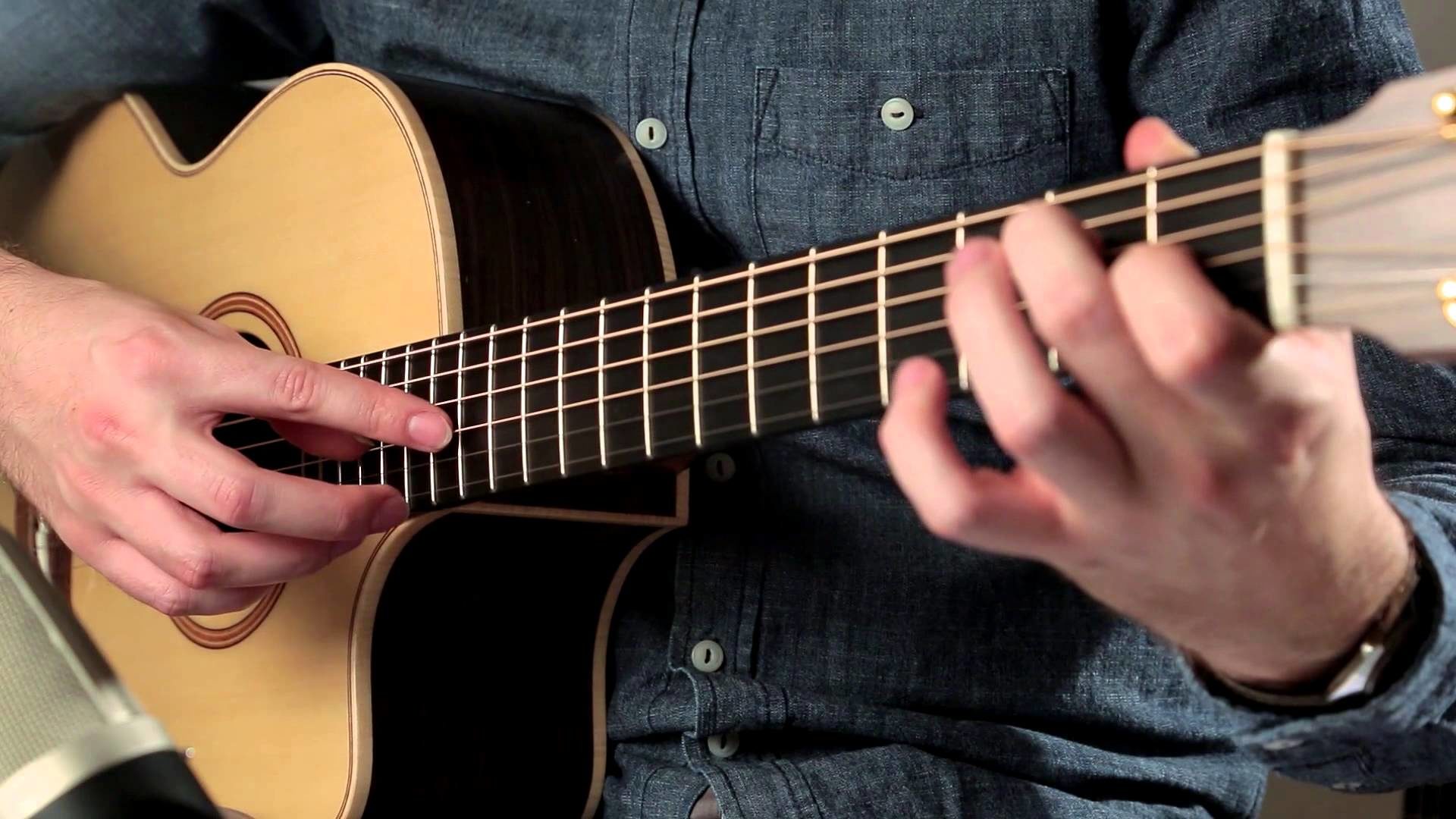Home>Instruments>Guitar>How To Play Blues On Acoustic Guitar
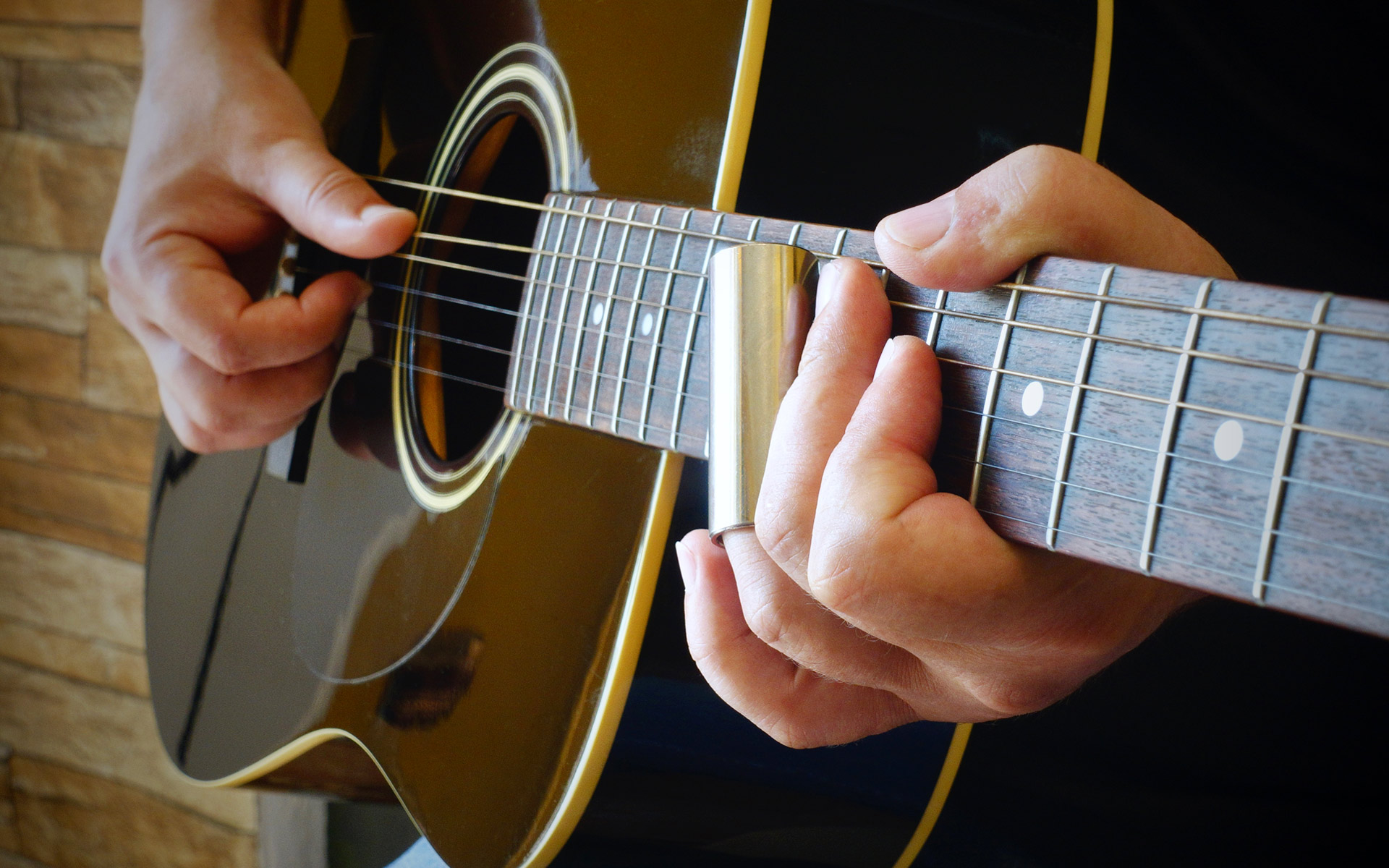

Guitar
How To Play Blues On Acoustic Guitar
Published: February 13, 2024
Learn how to play blues on acoustic guitar with our step-by-step guide. Master essential techniques and elevate your guitar skills today.
(Many of the links in this article redirect to a specific reviewed product. Your purchase of these products through affiliate links helps to generate commission for AudioLover.com, at no extra cost. Learn more)
Table of Contents
Introduction
So, you've got an acoustic guitar and a burning desire to delve into the soulful world of blues music. Congratulations! You're about to embark on a musical journey that has captivated generations with its emotive power and raw expressiveness. Whether you're a novice strummer or a seasoned guitarist looking to expand your repertoire, learning to play the blues on acoustic guitar is a rewarding and enriching experience.
The blues, with its roots deeply embedded in the African-American musical tradition, has evolved over the decades to become a cornerstone of modern music. Its influence can be heard in rock, jazz, country, and countless other genres, making it a fundamental style for any aspiring guitarist to explore.
In this guide, we'll walk through the essential elements of playing blues on acoustic guitar, from understanding the core principles of the blues to mastering fundamental chords and rhythm patterns. We'll also delve into the iconic 12-bar blues progression, a foundational structure that forms the backbone of countless blues classics. Furthermore, we'll explore various techniques and nuances that will infuse your playing with the soulful, emotive qualities that define the blues.
Whether you're drawn to the melancholic wail of a bottleneck slide or the rhythmic pulse of fingerstyle blues, this guide will equip you with the knowledge and skills to start your blues guitar journey on the right note. So, grab your acoustic guitar, get comfortable, and let's dive into the captivating world of blues music.
Understanding the Blues
Before delving into the technical aspects of playing blues on acoustic guitar, it’s essential to grasp the emotional and historical underpinnings of this genre. At its core, the blues is a musical expression of the human experience, often rooted in hardship, resilience, and the quest for catharsis. Originating in the Deep South of the United States in the late 19th century, the blues emerged from the African-American community’s rich cultural tapestry, intertwining elements of spirituals, work songs, and folk music.
Central to the blues ethos is the concept of “blue notes,” where certain pitches are bent or altered to convey a sense of melancholy or yearning. These expressive nuances, often achieved through techniques like string bending and vibrato, imbue the music with a poignant, soul-stirring quality.
Lyrically, the blues delves into universal themes of heartache, longing, and resilience, offering a poignant reflection of the human condition. Whether it’s the mournful lament of lost love or the defiant proclamation of overcoming adversity, the lyrical content of blues songs resonates with an authenticity that transcends time and culture.
Furthermore, the blues is characterized by its distinctive harmonic structure, typically featuring a 12-bar progression that underpins a vast repertoire of blues compositions. This foundational framework provides a canvas for emotive improvisation and musical storytelling, allowing players to infuse their own personality and experiences into the music.
Understanding the blues goes beyond mastering scales and chord progressions; it entails embracing the raw, unfiltered emotions that define the genre. As you embark on your blues guitar journey, keep in mind that the essence of the blues lies in its ability to convey the depth of human emotion through the universal language of music.
Essential Chords for Blues
As you venture into the realm of blues guitar, familiarizing yourself with essential chords is paramount. While the blues offers a rich tapestry of harmonic possibilities, several foundational chords form the backbone of this genre’s harmonic vocabulary.
The dominant 7th chord reigns supreme in the blues landscape, infusing compositions with a distinctive, soulful character. This chord’s expressive potency stems from the tension between its root, major third, perfect fifth, and minor seventh, creating a captivating blend of resolve and longing. Embrace the versatility of the dominant 7th chord across various positions and inversions, allowing its evocative resonance to permeate your playing.
Furthermore, the blues wouldn’t be complete without the brooding allure of the minor 7th chord. Embodying a sense of melancholic introspection, this chord adds depth and emotional complexity to blues progressions, inviting players to explore the genre’s introspective facets.
Augment your chord arsenal with the dominant 9th and dominant 13th chords, expanding your harmonic palette to encompass lush, jazzy textures. These extended chords inject sophistication and allure into blues progressions, offering a compelling avenue for harmonic exploration.
Moreover, don’t overlook the expressive potential of open-string chords, such as the open E7 and A7 shapes, which resonate with a timeless, earthy quality. Incorporating these voicings into your repertoire infuses your playing with the rustic charm and authenticity synonymous with acoustic blues.
As you acquaint yourself with these essential blues chords, embrace the nuances of finger placement, strumming techniques, and voicing variations. Delve into the evocative resonance of each chord, allowing their emotive potential to shape your musical narrative. Mastery of these foundational chords lays a robust harmonic foundation for your blues guitar odyssey, empowering you to navigate the genre’s expressive terrain with confidence and artistry.
Basic Blues Rhythm
At the heart of the blues lies a rhythmic vitality that propels its emotive storytelling. Mastering the foundational rhythm patterns is crucial for infusing your acoustic blues playing with authenticity and groove.
The 12-bar blues, a cornerstone of the genre, serves as the canvas for countless blues compositions. This rhythmic framework, typically structured in a 4/4 time signature, provides a fertile ground for expressive chord progressions and melodic improvisation. Embrace the cyclical nature of the 12-bar blues, internalizing its ebb and flow to navigate the genre’s rhythmic terrain with confidence.
Central to the blues rhythm lexicon is the shuffle, a syncopated groove that underpins a myriad of blues classics. Characterized by its distinctive “long-short” feel, the shuffle rhythm infuses compositions with an infectious, toe-tapping energy. Experiment with variations of the shuffle pattern, exploring its interplay with dominant 7th and 9th chords to craft compelling rhythmic textures.
Furthermore, delve into the art of fingerstyle blues, where intricate syncopations and bassline-driven rhythms converge to create a captivating sonic tapestry. Emulate the expressive nuances of blues legends, weaving together alternating bass patterns, percussive slaps, and melodic embellishments to breathe life into your acoustic blues arrangements.
As you immerse yourself in the realm of blues rhythm, pay heed to the dynamic interplay between space and intensity. Embrace the art of restraint, allowing silences and pauses to punctuate your playing and build suspense. Conversely, unleash the full force of your strumming hand to convey the raw, unbridled energy that defines the blues.
Ultimately, the essence of blues rhythm lies in its ability to evoke a visceral response, to stir the soul and move the body. Embrace the rhythmic pulse of the blues as a conduit for emotional expression, allowing its infectious cadence to resonate with the depths of human experience.
12-Bar Blues Progression
At the core of the blues repertoire lies the iconic 12-bar blues progression, a foundational structure that underpins a vast array of blues compositions. Understanding and internalizing this timeless framework is essential for any guitarist venturing into the world of blues music.
The 12-bar blues follows a specific chord progression that spans 12 measures, typically adhering to a I-IV-V chord structure. In the key of E, for instance, the 12-bar blues progression would feature the chords E7, A7, and B7, each occupying a designated segment of the 12-bar framework.
The structure of the 12-bar blues progression offers a canvas for expressive improvisation and melodic storytelling. Within this framework, guitarists have the freedom to infuse their playing with emotive bends, soulful licks, and evocative phrasing, making each rendition of the 12-bar blues a unique musical narrative.
Embrace the cyclical nature of the 12-bar blues, internalizing its ebb and flow to navigate the genre’s rhythmic terrain with confidence. Whether you’re strumming through a traditional 12-bar blues in the key of A or fingerpicking your way through a Delta blues rendition in the key of G, the 12-bar blues progression serves as a versatile foundation for creative exploration.
Furthermore, the 12-bar blues progression invites guitarists to experiment with variations and embellishments, infusing the framework with personal flair and stylistic nuances. Whether it’s incorporating jazzy 9th chord voicings, punctuating the progression with expressive turnarounds, or integrating melodic fills between chord changes, the 12-bar blues progression offers a fertile ground for artistic innovation.
Ultimately, mastering the 12-bar blues progression is not merely a technical endeavor; it’s an invitation to immerse oneself in the rich tapestry of blues expression. Embrace the timeless allure of this foundational structure, allowing its rhythmic cadence and harmonic interplay to shape your journey as a blues guitarist.
Blues Guitar Techniques
As you delve into the realm of blues guitar, embracing a diverse array of techniques is pivotal for capturing the genre’s emotive essence and expressive depth. From soul-stirring bends to evocative vibrato, these techniques form the bedrock of blues guitar artistry.
String bending stands as a hallmark of blues expression, allowing guitarists to infuse notes with poignant, vocal-like qualities. Mastering the art of bending entails precise control and nuanced manipulation of string tension, enabling you to evoke soulful cries and emotive wails through your instrument.
Embrace the allure of vibrato, a subtle yet impactful embellishment that imbues sustained notes with a shimmering, expressive quality. Whether employing finger vibrato or employing the subtle nuances of wrist vibrato, this technique adds a layer of emotional depth to your blues phrasing, lending a captivating vocal-like quality to your playing.
Slide guitar, synonymous with the delta blues tradition, offers a distinctive avenue for infusing your playing with haunting, ethereal timbres. Whether utilizing a bottleneck slide or a metal slide, the evocative glides and slurs of slide guitar techniques transport listeners to the windswept crossroads of blues folklore.
Fingerstyle blues techniques, characterized by intricate fingerpicking patterns and percussive rhythmic elements, offer a captivating approach to acoustic blues expression. Explore alternating bass patterns, syncopated melodies, and percussive slaps to craft a dynamic, multi-layered sonic tapestry that resonates with the rhythmic vitality of the blues.
Furthermore, the art of phrasing and dynamics plays a pivotal role in blues guitar mastery, allowing you to shape melodic lines with nuance and expressiveness. Embrace the interplay of light and shade, infusing your playing with dynamic swells and subtle articulations to convey the raw, emotive power of the blues.
As you navigate the rich tapestry of blues guitar techniques, remember that each technique serves as a conduit for emotional expression and storytelling. Embrace the nuances of these techniques, allowing them to shape your musical narrative and infuse your playing with the soul-stirring qualities that define the blues.
Adding Bluesy Soul to Your Playing
Infusing your playing with the soulful, emotive qualities that define the blues is a journey of self-discovery and artistic expression. Beyond mastering technical skills, cultivating a deep understanding of the blues ethos and embracing a soulful approach is essential for authentically capturing the genre’s essence.
Emotional authenticity lies at the heart of blues expression. As you navigate the sonic landscape of the blues, delve into the depths of your own experiences and emotions, allowing them to permeate your playing. Whether it’s the yearning ache of a heartfelt bend or the raw, unbridled energy of a searing solo, imbuing your notes with genuine emotion is paramount in conveying the soul of the blues.
Listening intently to blues recordings from iconic artists is a transformative experience that can enrich your playing. Absorb the phrasing nuances, expressive bends, and emotive vibrato of blues legends, allowing their artistry to inform and inspire your own musical journey. Emulate the vocal-like qualities of blues guitarists, weaving your own stories and emotions into the fabric of your playing.
Moreover, the blues thrives on spontaneity and improvisation, inviting you to channel your innermost feelings through your instrument. Embrace the freedom of expression that the blues affords, allowing your playing to evolve organically and reflect the ever-shifting landscape of human emotion.
As you hone your blues vocabulary, remember that silence and space are as integral to the conversation as the notes themselves. Embrace the art of restraint, allowing pauses and dynamics to punctuate your phrases and imbue them with a sense of anticipation and release.
Furthermore, developing a keen sense of tone and timbre is pivotal in infusing your playing with bluesy soul. Experiment with different pickup selections, amp settings, and playing dynamics to sculpt a sonic palette that resonates with the evocative qualities of the blues.
Ultimately, adding bluesy soul to your playing is an introspective journey that transcends technical proficiency. It’s a testament to the human experience, a conduit for channeling raw emotion, and a celebration of the timeless art of storytelling through music. Embrace the soul-stirring allure of the blues, allowing it to shape your playing with depth, authenticity, and unwavering passion.
Conclusion
Congratulations on embarking on your blues guitar journey! As you navigate the soulful terrain of the blues, remember that this genre is not merely about mastering technical skills; it’s a profound exploration of human emotion, resilience, and the art of storytelling through music. Whether you’re captivated by the haunting allure of slide guitar, the rhythmic vitality of fingerstyle blues, or the expressive potential of soulful bends and vibrato, the blues offers a rich tapestry of sonic possibilities to explore.
Embrace the foundational elements of the blues, from the emotive power of the 12-bar blues progression to the soul-stirring nuances of blues guitar techniques. Allow the genre’s historical and cultural significance to inform your playing, infusing your notes with the timeless essence of blues expression.
Furthermore, remember that your journey as a blues guitarist is a deeply personal odyssey. Embrace the freedom of improvisation, allowing your playing to evolve organically and reflect the depth of your own experiences and emotions. Listen intently to blues recordings from legendary artists, drawing inspiration from their artistry while weaving your own stories into the fabric of your playing.
As you continue to hone your craft, cultivate a keen sense of tone and timbre, sculpting a sonic palette that resonates with the evocative qualities of the blues. Embrace the interplay of light and shade, dynamics and silence, allowing your playing to convey the raw, unfiltered emotions that define the blues.
Ultimately, the blues is a timeless testament to the human condition, a musical language that transcends boundaries and resonates with the depths of the soul. Whether you’re strumming a weathered acoustic guitar on a front porch or commanding the stage with electric fervor, the blues invites you to channel your innermost feelings through your instrument, forging a profound connection with your audience and yourself.
So, as you pick up your guitar and embark on your next bluesy odyssey, remember that the essence of the blues lies in the authenticity of emotion, the power of storytelling, and the unwavering resilience of the human spirit. Let the timeless allure of the blues guide your playing, infusing each note with soul-stirring depth and unbridled passion.


